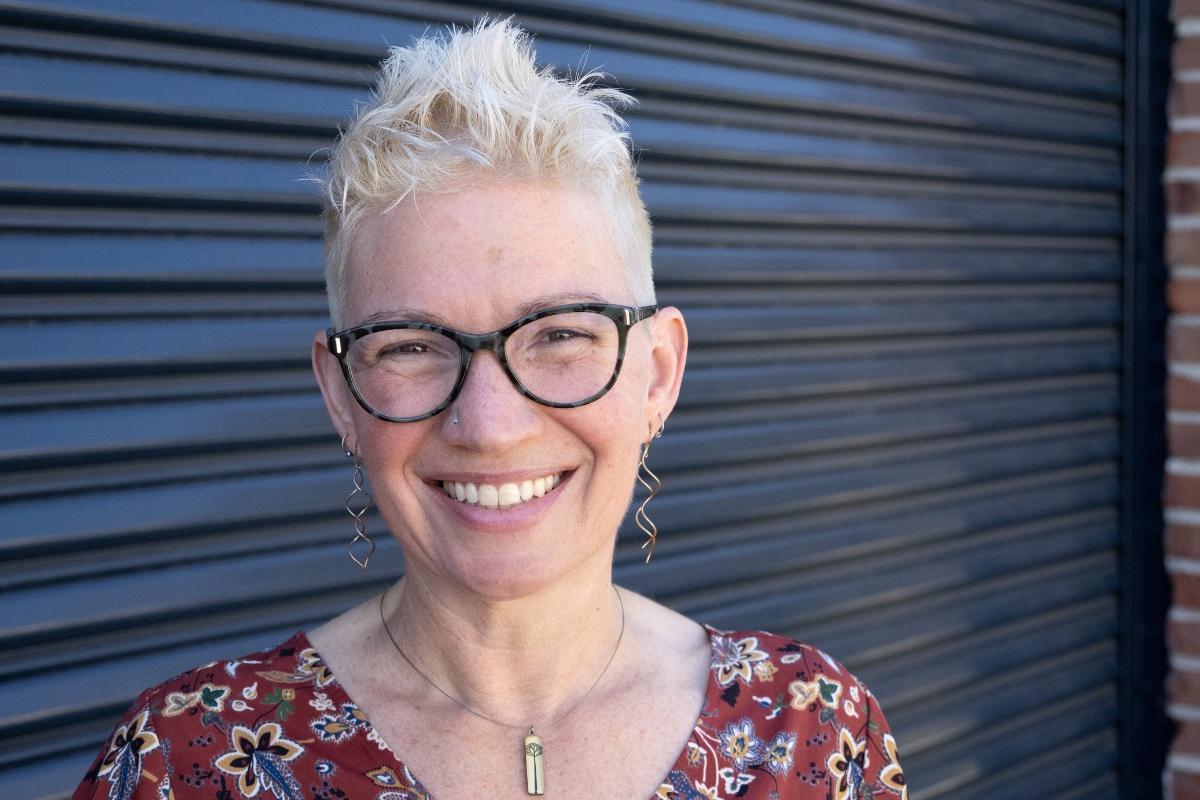
Shannon Smith-Bernardin, PhD, RN, associate professor, is an international leader in the field of sobering care.
For Patients Experiencing Homelessness, Sobering Centers Offer Path to Stability
Excessive alcohol consumption accounts for an estimated $24.6 billion dollars in United States' health care costs annually. There are over 1 million emergency department visits for non-life-threatening alcohol intoxication each year. Many of these patients are also experiencing homelessness.
But what about an alternative for patients that don’t require the emergency room’s level of care? The answer, says associate professor Shannon Smith-Bernardin, PhD, RN, is sobering centers.
Smith-Bernardin is an international leader in the field of sobering care. The co-founder and current president of the non-profit the National Sobering Collaborative, she shares what sobering centers are, what services they provide and what makes them effective particularly for vulnerable populations.
Q. What is a sobering center?
Sobering centers provide a safe place for adult patients who are acutely intoxicated on alcohol or other substances to become sober while being monitored by trained professionals.
Designed for short stays – four to 12 hours – centers typically offer beds, showers and food. The goal is for patients to sober up and move past the harms of acute intoxication, while also avoiding risk of additional injury, assault or physical harm from being outside in the elements.
Sobering centers frequently serve as an alternative to the emergency department or jail. They are typically open 24 hours a day, seven days a week. Emergency medical services and law enforcement can bring individuals to the center, or individuals can drop in for care.
Q. What percentage of patients are homeless?
Between 65-70% of patients that utilize sobering centers are experiencing homelessness or navigating housing insecurity.
The more frequently a person utilizes a sobering center, the more likely they are to also be experiencing homelessness. Of the patients that have used a sobering center between two and five times in the last year, 98% are experiencing homelessness. Of those that have utilized a center more than six times in the last year, 100% are experiencing homelessness.
Sobering centers refer patients to community services such as primary care, shelters, alcohol treatment programs, detox or rehab. In this way, centers function as an important hub to connect community resources with a population that can be difficult to coordinate care for.
Q. Why is the percentage of patients experiencing homelessness in sobering centers so high?
UCSF’s California Statewide Study of People Experiencing Homelessness – the largest representative study of homelessness in the U.S. since the mid-1990s – found that almost two-thirds (62%) of participants reported having had a period in their life of heavy drinking, defined as drinking at least three times a week to get drunk or heavy intermittent drinking. This, coupled with the fact that most people who are unhoused do not have access to a safe, indoor space in which to drink or to sober up, accounts for the high percentage of patients experiencing homelessness in sobering centers.
Q. How do sobering centers help individuals and also the health care system?
A major advantage for patients is the one-on-one attention from staff who have specific training in substance use. Staff provide compassionate care, and their attention is not split between competing priorities as it would need to be in an emergency department or jail setting.
It is not uncommon for sobering centers to receive the same patient 10-150 times per year. These patients often have difficulty maintaining relationships due to the circumstances that are leading to their frequent intoxication. But sobering centers provide an opportunity for patients to build a consistent relationship with a health care professional who is specifically trained in addiction and trauma-informed care. And importantly, sobering centers staff peer professionals with lived expertise in recovery and other critical areas such as poverty, criminal justice, trauma and homelessness. In addition to providing needed emotional support, these relationships can be pivotal in helping patients make healthier choices because they feel seen, respected and cared for. Further, sobering centers help patients avoid both the criminal justice system and expensive emergency room bills.
For the health care system, the centers keep people out of the emergency department who don't necessarily need to be there, allowing space for other patients. It’s estimated that diverting even 50% of acute intoxication cases from the emergency room to a sobering center saves the U.S. between $230 million - $1 billion each year.
Q. You are the co-founder and first president of the National Sobering Collaborative. What led you to start this organization?
I co-founded the National Sobering Collaborative (NSC) with two colleagues in 2015 because we wanted a solution outside of criminal and emergency systems to serve people with harmful substance use. Today we are a nationwide non-profit organization that brings together people engaged in sobering care across the country to discuss best practices, policies and program operations. We provide support to over 70 sobering centers that serve an estimated 121,260 clients annually across approximately 333,600 visits.
This year, NSC authored the world’s first recommended standards of sobering care. The standards provide guidance on a wide variety of topics related to effectively providing sobering care including administrative operations, community engagement, facilities and safety, and quality and evaluation.
Q. What are the barriers to expanding sobering care?
Financial sustainability is a big challenge. Sobering care is a cost avoidance model – saving our health care and law enforcement systems critical funds. That also makes it difficult to argue for who should pay for it!
San Francisco is home to two sobering centers, including SF Sobering Center which is the country’s longest running center to admit patients directly from emergency medical services or law enforcement personnel. They have been providing that service since 2003 and serve as a national model.
We are lucky in San Francisco because it is part of the Department of Public Health’s budget. The City and County of San Francisco pays for and contracts with nonprofits to run sobering programs. NSC is looking at models of successful funding and exploring how we can guide others with ways to sustain their programs. Our hope is to make sobering care available in every community, and offered in a way that is responsive to that community’s unique needs.



